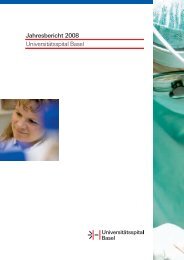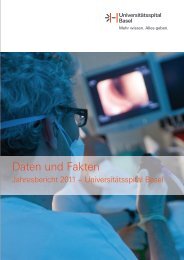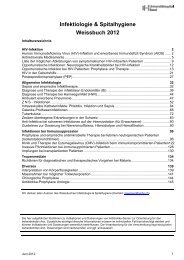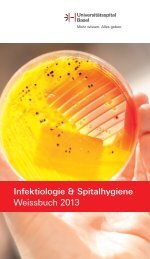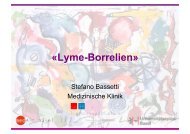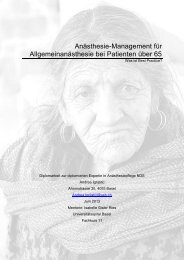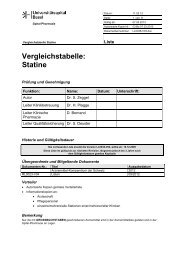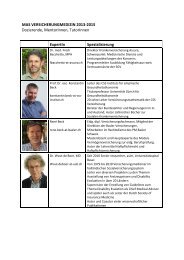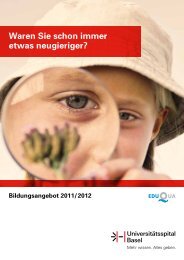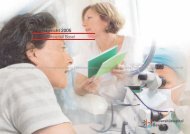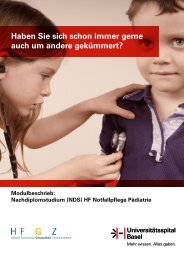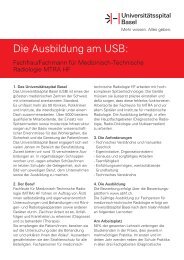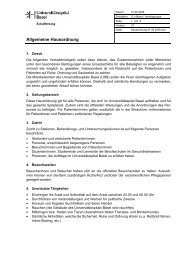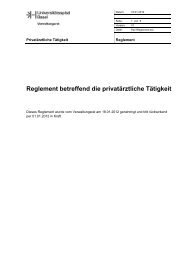Transmucosal Nasal Drug Delivery: Systemic Bioavailability of ...
Transmucosal Nasal Drug Delivery: Systemic Bioavailability of ...
Transmucosal Nasal Drug Delivery: Systemic Bioavailability of ...
Create successful ePaper yourself
Turn your PDF publications into a flip-book with our unique Google optimized e-Paper software.
7. Project III: <strong>Transmucosal</strong> nasal delivery <strong>of</strong> low-dose midazolam – evaluation <strong>of</strong> two preparations for procedural anxiolysis<br />
Local irritation and adverse drug reactions<br />
Of total 110 patients receiving study medication, 53 patients (MD n=27 [48%], UD n=26 [52%])<br />
spontaneously reported local irritation. Intensity <strong>of</strong> local irritation was rated as mild (MD n=22<br />
[39%], UD n=13 [24%]), moderate (MD n=5 [9%], UD n=9 [17%]), or strong (MD n=0, UD n=4<br />
[7%]), see Figure 7-6.<br />
Besides burning (burning in the nose MD n=14 [52%], UD n=15 [58%] and burning in the throat<br />
area MD n=3 [11%], UD n=1 [4%]), patients sporadically reported on watery eyes and coughing.<br />
Local irritation was reported to vanish within few minutes and never had to be treated.<br />
No severe adverse reaction occurred and hence flumazenil never had to be administered. Other<br />
mentioned discomfort (e.g., noise, pain in the back or hip) were related to the MRI examination or<br />
disease <strong>of</strong> the patient.<br />
MD<br />
UD<br />
moderate;<br />
9%<br />
strong; 0%<br />
moderate;<br />
17%<br />
strong; 7%<br />
mild; 39%<br />
none; 52%<br />
none; 52%<br />
mild; 24%<br />
Figure 7-6: Spontaneous reports on local irritation; in both groups 52% <strong>of</strong> the patients did not report<br />
on any local irritation. The intensity <strong>of</strong> the local irritation was rated as mild (MD: 39%, UD 24%),<br />
moderate (MD: 9%, UD: 17%), and strong (MD: 0%, UD: 7%).<br />
Monitoring<br />
Two months after study start, difficulties in patient recruitment in two study centers (B, C) were<br />
detected. Patients <strong>of</strong>ten admitted their fear only at the beginning or even during MRI examination.<br />
To avoid delay <strong>of</strong> day’s schedule, patients admitting their fear only during MRI examination, were<br />
not invited to enter the study and the routine anxiolytic treatment was <strong>of</strong>fered.<br />
To call attention for the possibility <strong>of</strong> treatment options for claustrophobia and general anxiety, we<br />
designed posters and attached them in the waiting room <strong>of</strong> Centre B and C.<br />
Katja Suter-Zimmermann Page 91 <strong>of</strong> 188 University <strong>of</strong> Basel, 2008




